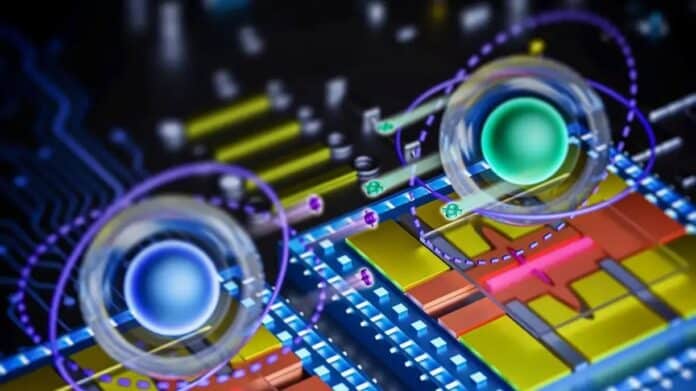Because electron charge qubits are naturally simple to design, fabricate, control, and read, they are attractive candidates for solid-state quantum computing. Unfortunately, intense charge noise severely limits the coherence duration of electron charge qubits constructed on standard semiconductors and superconductors to the order of microseconds.
A team led by the U.S. Department of Energy’s (DOE) Argonne National Laboratory reports electron charge qubits that exceed this limit. With their new kind of qubit, they have increased the coherence time to an astounding 0.1 milliseconds, almost a thousand times faster than the previous record.
0.1 milliseconds is as short as an eyeblink in real life. It does, however, constitute a sufficiently lengthy window in the quantum realm for a qubit to execute thousands upon thousands of operations. That is about a thousand-fold increase from the initial 0.1 microseconds.
The motional (charge) states of electrons contain quantum information encoded by the team’s qubits. They are known as charge qubits as a result.
Dafei Jin, a professor at the University of Notre Dame with a joint appointment at Argonne and the lead investigator of the project, said, “Among various existing qubits, electron charge qubits are especially attractive because of their simplicity in fabrication and operation, as well as compatibility with existing infrastructures for classical computers. This simplicity should translate into low cost in building and running large-scale quantum computers.”
A single electron imprisoned in a vacuum on a highly pure solid-neon surface is the team’s qubit. The neon is significant since it can withstand environmental disturbances. One of the few elements that doesn’t react with other elements is neon. The extended coherence time is intrinsically guaranteed by the neon platform, which also protects the electron qubit.
The long qubit lifetime allows scientists to control and read out the single qubit states with very high fidelity.
Jin said, “Rather than 10 to 100 operations over the coherence times of conventional electron charge qubits, our qubits can perform 10,000 with very high precision and speed.”
Scalability to connect with numerous other qubits is yet another crucial feature of a qubit. By demonstrating that two-electron qubits may couple to the same superconducting circuit and exchange information over the circuit, the team accomplished an important milestone. This is a significant step toward the goal of two-qubit entanglement, which is essential to quantum computing.
The group will keep working to entangle two or more qubits and further extend the coherence time as they still need to optimize their electron qubit fully.
Journal Reference:
- Zhou, X., Li, X., Chen, Q. et al. Electron charge qubit with 0.1 millisecond coherence time. Nat. Phys. (2023). DOI: 10.1038/s41567-023-02247-5
